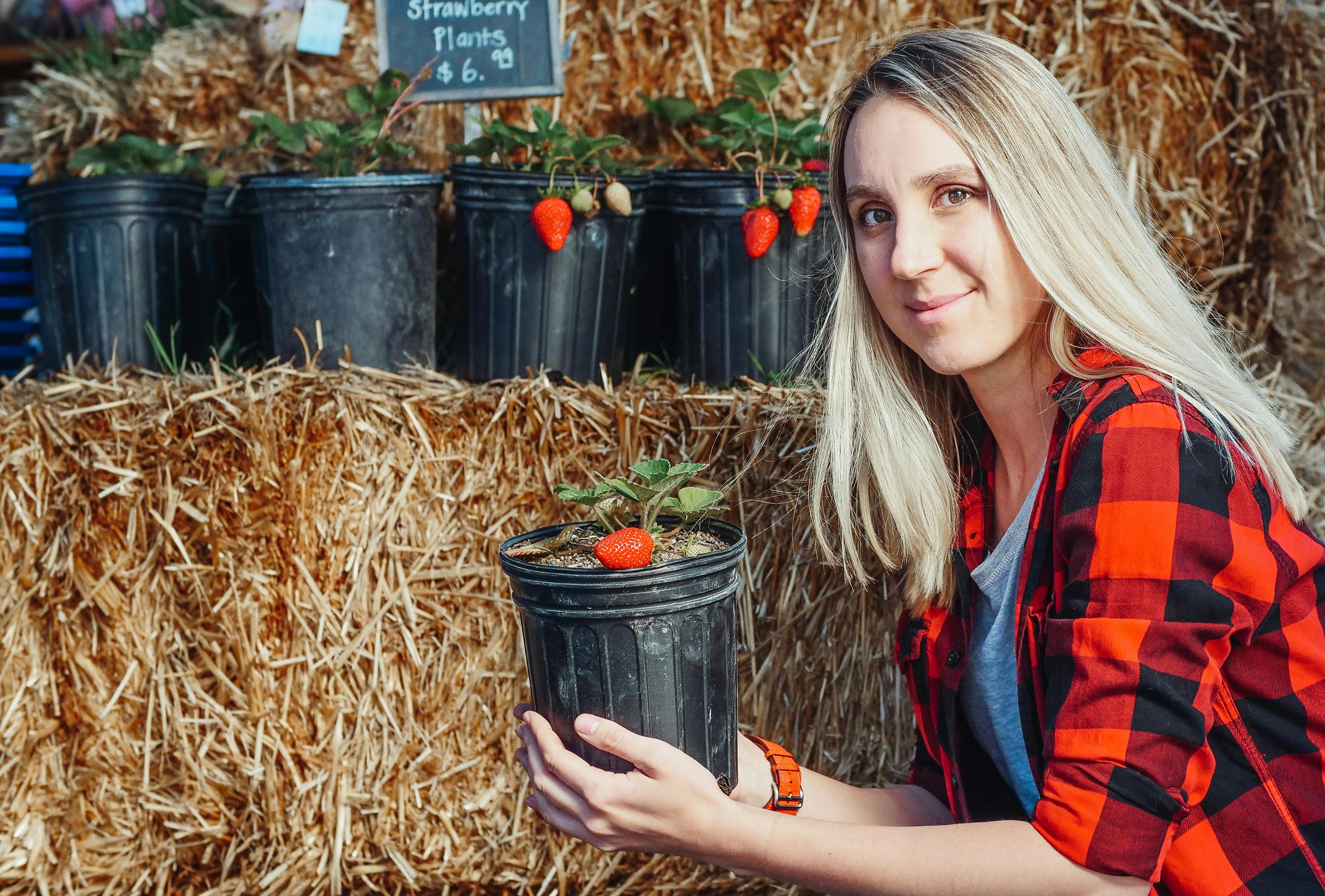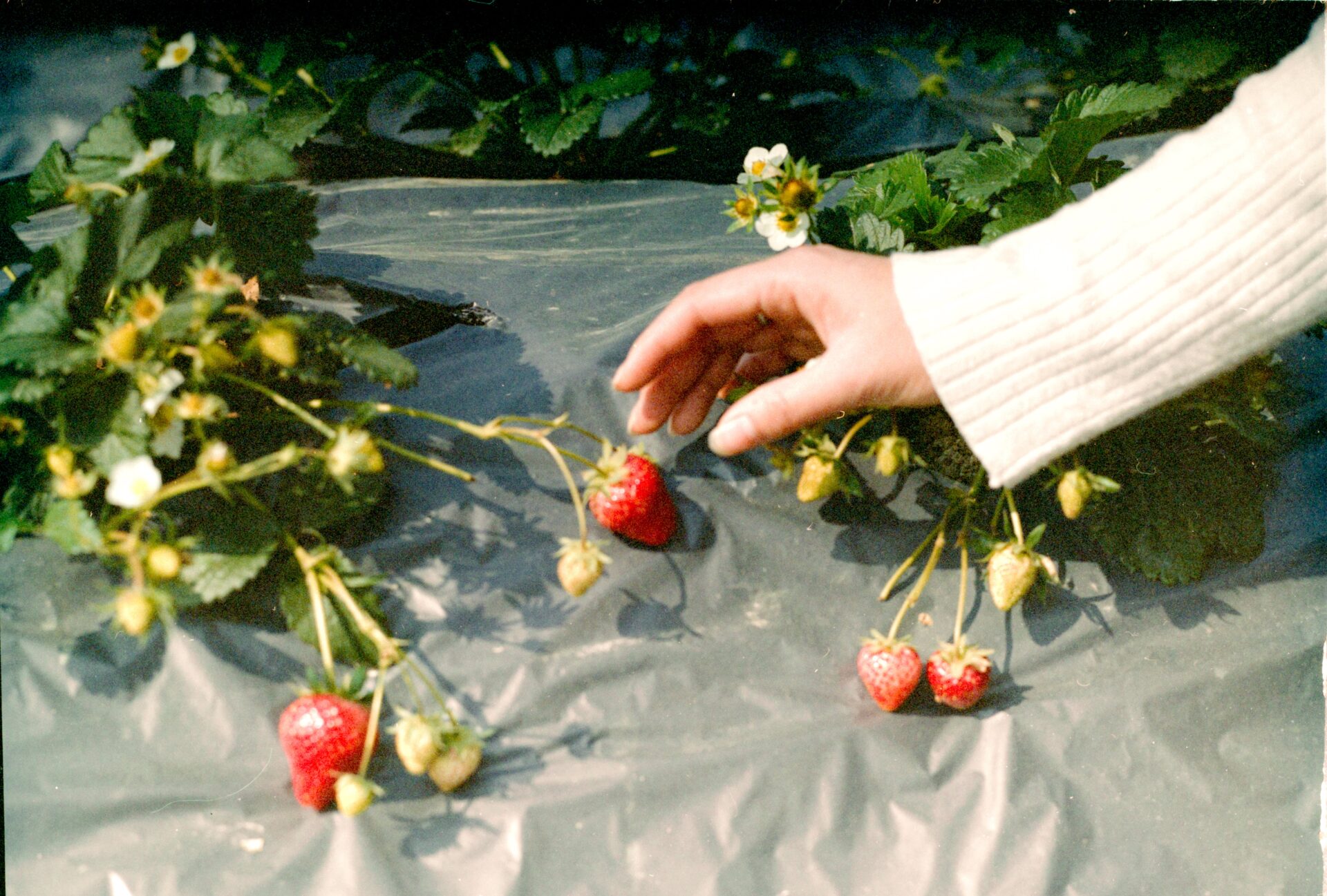Growing sweet strawberries is a goal for many gardeners. Strawberries are a popular crop because they are easy to grow and can produce an abundance of delicious fruit over several weeks. If you want to ensure that your strawberries are as sweet as possible, there are several steps you can take when growing them. By following the tips outlined below, you can increase the sweetness of your strawberries and enjoy a more flavorful harvest.To increase the sugar content in strawberries while growing, it is important to ensure they are getting adequate sunlight and water. Additionally, make sure the soil is rich in nutrients such as nitrogen and potassium, as these can help increase sugar content. Lastly, ensure that the temperature of the area where they are growing is not too hot or too cold, as this can affect sugar levels.
Environmental Factors
One of the main reasons why strawberries are not as sweet as desired is due to environmental factors. These include soil conditions, temperature, and water availability. Poor soil conditions can lead to a decrease in the amount of sugar produced in the fruit, while warm temperatures can cause sugars to break down more quickly than usual. In addition, inadequate water availability can cause a decrease in sweetness as well. All of these environmental factors can contribute to a lack of sweetness in strawberries.
Genetic Variability
Another reason why strawberries may not be as sweet as desired is due to genetic variability. Different varieties of strawberries have different levels of sweetness depending on their genetics, with some being naturally sweeter than others. This means that even if environmental conditions are ideal, some varieties may still produce fruit that is not as sweet as desired.
Harvesting Practices
Finally, harvesting practices can also affect the sweetness of strawberries. If they are picked too early or too late, they may not be as sweet as desired because they have not had enough time to fully ripen or because their sugars have already started to break down. Additionally, if harvesting machines are used that cause bruising or damage to the fruit this can also decrease its sweetness.
Growing Conditions that Affect the Sweetness of Strawberries
Strawberries are a delicious fruit that can be enjoyed fresh or used in recipes. The sweetness of strawberries is determined by a variety of growing conditions. Temperature, soil type, and water availability are just some of the factors that have an impact on the sweetness of strawberries.
Temperature is one of the most important factors for strawberry growth and sweetness. Strawberries prefer cool, temperate climates with temperatures between 50 to 70 degrees Fahrenheit. Warmer temperatures can cause stress on plants and reduce sweetness, while lower temperatures can slow down growth and reduce yields.
Soil type also has a major influence on strawberry growth and sweetness. The ideal soil for growing strawberries is rich in organic matter and well-drained. Sandy soils are especially beneficial because they allow for better root development and better drainage which helps promote sweeter fruit. Soils that are too acidic or too alkaline can cause plant stress and reduce yields.
Water availability is another factor that affects strawberry sweetness. When water levels are low, plants may become stressed which reduces sugar levels in the fruit. On the other hand, too much water can cause root rot or other diseases which can also affect sweetness levels. It is important to ensure proper irrigation practices are followed to ensure optimal sweetening conditions.
In summary, there are many environmental factors that affect the sweetness of strawberries including temperature, soil type, and water availability. By understanding these factors and taking steps to ensure optimal growing conditions, growers can produce sweeter fruits with higher yields.
Fertilizing Techniques to Enhance Sweetness of Strawberries
Fertilizing is an essential step for any type of crop, including strawberries. With proper fertilization, strawberry plants can be kept healthy and strong while also producing sweeter fruits. There are a few different techniques that you can use to ensure that your strawberry plants are getting the nutrients they need to produce sweet and delicious strawberries.
The first technique is to use a balanced fertilizer. Balanced fertilizers contain all of the essential nutrients that plants need in order to grow and develop properly. This includes nitrogen, phosphorus, and potassium. Applying a balanced fertilizer regularly will help ensure that your strawberry plants receive all the necessary nutrients they need for both growth and fruit production.
The second technique is to supplement your regular fertilizer with trace elements such as iron or zinc. These micronutrients are essential for the proper development of strawberry fruits, and adding them to your regular fertilization schedule will help ensure that your plants have access to these nutrients when they need them most.
Finally, foliar feeding is also an effective method for enhancing sweetness in strawberries. Foliar feeding involves spraying liquid fertilizer directly onto the leaves of your strawberry plants, which allows them to absorb the nutrients more quickly and efficiently than if they were applied through soil applications alone. Foliar feeding can provide a quick boost of essential nutrients when needed, helping to promote sweeter fruits in a shorter amount of time.
By implementing these strategies into your regular fertilization schedule, you can help ensure that your strawberry plants have access to all the necessary nutrients and trace elements they need in order to produce sweet and flavorful fruits throughout the growing season.
Watering Practices for Sweeter Strawberries
Growing strawberries is a fun and rewarding process. The sweet, juicy, and mouth-watering flavor of a strawberry is hard to beat. To ensure you get the sweetest and most flavorful strawberries, it’s important to know how to properly water them.
To keep your strawberries hydrated and healthy, you should water them deeply at least once a week. You want the soil to be moist but not saturated so if you’re using an irrigation system, make sure you set it up correctly. If you’re using a hose or watering can, make sure to water the plants evenly and thoroughly.
In addition to weekly watering, you should also check on your strawberry plants every few days during hot weather or periods of drought. Make sure they are getting enough water by feeling the soil around the base of the plant. If it feels dry more than an inch down, then it’s time to give your strawberry plants a drink.
It’s also important to make sure that your strawberry plants are getting enough sunlight. They need at least six hours of direct sunlight each day in order to produce their sweetest berries. If they are shaded too much, their growth will be stunted and their berries won’t be as sweet as they could be.
Finally, mulching your strawberry plants can help them retain moisture and keep weeds away from their roots. Mulch helps keep the soil cool in hot weather and gives the roots of the plants access to nutrients that they need for optimal growth and sweetness of fruit production.
With proper watering practices and care, you can ensure that your strawberries will be as sweet as possible when harvested!

Pruning Techniques to Maximize Strawberry Sweetness
Strawberries are one of the most popular fruits in the world and they are known for their sweet and juicy taste. However, to get the best flavor out of your strawberries, you need to prune them correctly. Pruning is an essential step in growing strawberries as it helps them produce maximum yield and sweetness. There are several pruning techniques that can be used to maximize the sweetness of your strawberries.
The first technique is called “pinching” or “tipping” the plant’s runners. This involves removing the tips of all new runners that form on the plant, which will help promote larger fruits with more sweetness. To do this, simply pinch off the tip of each runner with your fingers or pruners. It is important to be gentle when pinching as too much force could damage the plant.
Another pruning technique is removing old flower stalks and leaves from the plant after they have been harvested. This will help ensure that all energy and resources go towards producing sweet, juicy berries instead of wasted energy on dead flowers and leaves. It is also important to keep an eye on any diseased or damaged parts of the plant, as these should be removed immediately to prevent any spread of disease or pests that could potentially harm your strawberry plants.
Finally, keep in mind that strawberries can only produce a certain amount of sweetness so it is important to limit how many fruits you harvest from each plant at one time. Over-picking can lead to smaller fruit size and less flavor since less resources are available for other fruits on the same plant. With careful pruning techniques and proper harvesting practices, you can maximize strawberry sweetness with every harvest!
Supplements that Help Increase Sugar Content in Strawberries
Strawberries are naturally sweet and provide a delicious addition to many dishes. While they are already sweet, some people may want to increase the sugar content of their strawberries to make them even sweeter. Luckily, there are a few supplements available that can help increase the sugar content of strawberries.
Calcium sulfate is one supplement that can be used to increase the sugar content of strawberries. Calcium sulfate helps to reduce the amount of water in plants, which can lead to higher sugar concentrations in strawberry fruits. It is important to note that calcium sulfate should be used with caution as it can also reduce crop yields if used incorrectly.
Boron is another common supplement that can be used to increase the sugar content of strawberries. Boron helps regulate calcium and phosphorus metabolism in plants, which can lead to increased sugar concentrations in strawberry fruits. It is also important to note that boron should be used with caution as it can also reduce crop yields if used incorrectly.
Potassium nitrate is another supplement that can help increase the sugar content of strawberries. Potassium nitrate helps regulate plant respiration and photosynthesis, which leads to higher sugar concentrations in strawberry fruits. However, it is important to note that potassium nitrate should be used with caution as it can also reduce crop yields if used incorrectly.
These are just a few supplements available for increasing the sugar content of strawberries. It is important for growers and home gardeners alike to research all supplements carefully before using them and always use them according to instructions for best results.
Additionally, growers should monitor their crops closely after applying any supplements and adjust their application rate accordingly if necessary. By taking these steps, growers will be able to maximize their strawberry crop’s sweetness without sacrificing yield or quality.
Optimal Soil pH for Sweetest Strawberries
Strawberries are an incredibly sweet and delicious summertime treat. But, in order to enjoy the sweetest strawberries, you must ensure they are planted in soil with the optimal pH balance. The ideal soil pH for growing strawberries is between 5.5 and 6.5 on the pH scale. This slightly acidic soil helps the plants absorb enough nutrients from the soil to produce very sweet and delicious fruits.
Soil that is too acidic or alkaline can make it difficult for plants to absorb nutrients from the soil, resulting in weaker plants and sour tasting strawberries. Additionally, acidic soils can also cause plant diseases such as root rot which can kill your strawberry plants and ruin your harvest.
If you’re unsure what the pH level of your soil is, you can buy a simple soil testing kit at any garden center or hardware store. It’s important to note that different varieties of strawberries may require different levels of acidity, so be sure to check with your local nursery when selecting a variety of strawberry plant for your garden.
Once you know what type of strawberry plant you’d like to grow as well as the pH level of your soil, you can take steps to adjust the acidity if necessary. Adding lime or wood ash will raise the pH level while adding sulfur or peat moss will lower it. Additionally, adding organic matter such as compost will help keep your soil at an optimal pH level over time by providing essential nutrients and improving drainage and aeration which helps keep soils healthy and optimally balanced.
By making sure your soil has an optimal pH balance before planting your strawberry plants, you’ll have a much better chance of enjoying sweet, juicy berries all summer long!

Conclusion
Growing sweeter strawberries is possible by taking into consideration the soil conditions as well as the amount of water and sunlight the plants receive. Applying mulch to the soil surface and fertilizing your strawberry plants can also help to enhance sweetness. Additionally, it is important to harvest strawberries when they are ripe and pick off any diseased or damaged berries. Finally, increasing air circulation around the strawberry plants can help to reduce disease pressure and improve sweetness.
Overall, if you want to grow sweet strawberries, it’s important to start with good soil, provide adequate water, provide plenty of sunlight and air circulation, mulch the beds, apply fertilizer when needed, pick off any damaged or diseased berries and harvest ripe strawberries. With these tips in mind, you should be able to harvest sweet and delicious strawberries!



